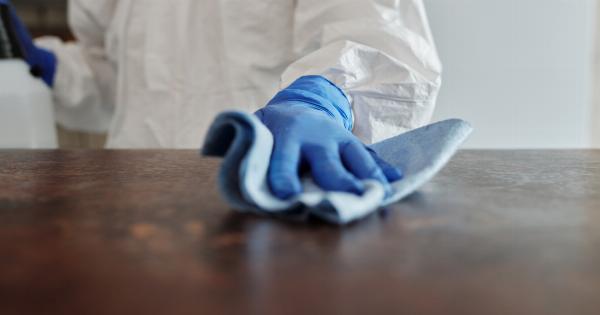Bedwetting, also known as nocturnal enuresis, is a common issue that many children experience during their early years of development.
While it can be embarrassing and frustrating for both the child and their parents, it is important to remember that bedwetting is a normal part of growing up and often resolves on its own. In this article, we will explore the causes, treatment options, and strategies for managing bedwetting in boys.
Causes of Bedwetting in Boys
There are several factors that can contribute to bedwetting in boys:.
1. Delayed Physical Development
In some cases, bedwetting may occur due to delayed physical development. The muscles responsible for controlling the bladder may take longer to fully mature, leading to involuntary urination during sleep.
2. Hormonal Imbalance
A hormone called vasopressin helps reduce urine production at night. In children who wet the bed, their bodies may not produce enough vasopressin, resulting in increased urine production and bedwetting.
3. Overactive Bladder
Some boys may have an overactive bladder, which causes the bladder to contract involuntarily, leading to sudden and uncontrollable urges to urinate. This can result in bedwetting if the child is unable to wake up in time to use the bathroom.
4. Urinary Tract Infections
Urinary tract infections (UTIs) can cause discomfort and inflammation in the bladder, making it difficult for the child to fully control their urination. This can contribute to bedwetting episodes.
5. Emotional and Psychological Factors
Stress, anxiety, and emotional disturbances can also play a role in bedwetting. Major life changes such as starting school, moving to a new house, or experiencing family issues can trigger bedwetting episodes in boys.
Treatment Options for Bedwetting
While bedwetting is not a cause for immediate concern, seeking treatment can help manage the condition and alleviate any emotional distress associated with it. Here are some common treatment options:.
1. Bedwetting Alarms
Bedwetting alarms are devices that are designed to alert the child when they begin to urinate during sleep.
Over time, the child learns to associate the alarm with the need to wake up and use the bathroom, eventually helping them develop nighttime bladder control.
2. Protective Bedding
Using protective bedding such as waterproof mattress covers can help prevent damage to the mattress and bedding, making cleanup easier. This can also reduce any embarrassment or shame the child may feel due to bedwetting.
3. Bladder Training
Bladder training involves creating a routine for the child to empty their bladder at regular intervals throughout the day. This helps increase the bladder’s capacity and reduces the likelihood of nighttime accidents.
4. Medications
In some cases, healthcare professionals may prescribe medications to help manage bedwetting. These medications work by increasing vasopressin levels or reducing bladder contractions during sleep.
Managing Bedwetting at Home
Alongside treatment options, there are several strategies that parents can implement at home to support their child through bedwetting:.
1. Encouragement and Support
It is crucial to provide emotional support and reassurance to the child as they navigate bedwetting. Letting them know that it is a common issue and that they are not alone can help alleviate any feelings of shame or embarrassment.
2. Limiting Fluid Intake
Encourage your child to drink fluids earlier in the day and limit their intake closer to bedtime. Emptying the bladder before sleep can also help minimize the chances of bedwetting.
3. Establishing a Bathroom Routine
Creating a regular bathroom routine before bedtime can help signal to the body that it is time to empty the bladder. Encourage your child to use the bathroom before going to sleep.
4. Positive Reinforcement
Implement a reward system to motivate your child’s progress. Provide praise and small incentives for dry nights or even successful attempts at waking up to use the bathroom.
Conclusion
Bedwetting is a common occurrence in many boys and is often outgrown over time. By understanding the causes and treatment options available, parents can support their child through this phase and help them develop nighttime bladder control.
Remember, patience, support, and open communication are essential in managing bedwetting and ensuring the child’s emotional well-being.





























